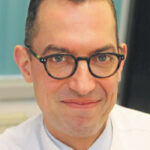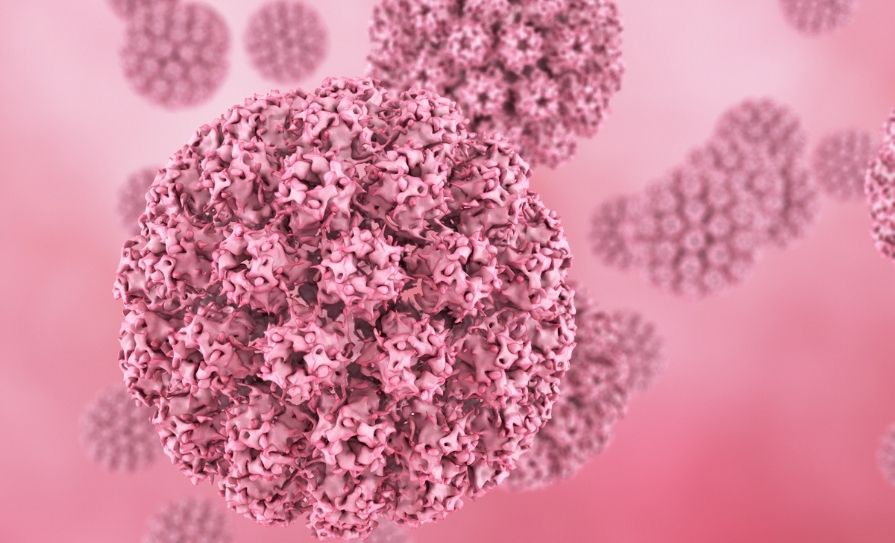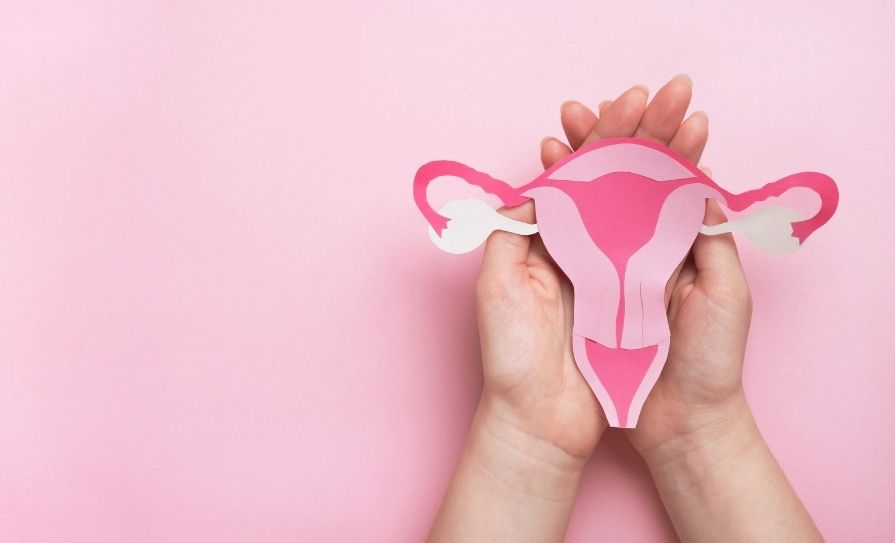Attendees at UCD’s Charles Institute Seminar Series recently heard a presentation by Professor of Dermatology Prof Maurice van Steensel on the role for sebaceous gland organoids in skin health.
The Charles Institute, Ireland’s national dermatology research and education centre, hosts a range of guest speakers who cover a variety of topics ranging from skin cancer to psoriasis, among others. the series, which is sponsored by RELIFE (part of the A.Menarini group), is designed to provide expert advice from a range of distinguished national and international experts in their respective elds and is chaired by Prof Desmond Tobin, Full Professor of Dermatological Science at UCD School of Medicine and Director of the Charles Institute of Dermatology. The seminars are broadcast to attendees with a special interest in dermatology and cutaneous science in other locations, who access the talks remotely via an audio-visual link.

Attendees heard a presentation from Prof Maurice van Steensel, Professor of Dermatology and Skin Biology at Lee Kong Chian School of Medicine at Nanyang Technological University in Singapore. Prof van Steensel is a dermatologist with more than two decades of experience in a wide range of skin research, from molecular biology to clinical trials. He is also co-founder of ArrowBiome, a Singapore biotech company that uses proprietary technology to deliver transformative solutions for selective microbiome control.
Prof van Steensel delivered a talk to the Charles Seminar titled ‘Why make sebaceous organoids?’, in which he discussed the utilisation of sebaceous organoids – otherwise known as ‘sebonoids’ – and their role as progenitor cell-derived structures that recapitulate sebaceous gland development and function. Prof van Steensel also described how he and his colleagues create these sebonoids and how this process compares to other procedures, as well as how clinical interventions can be validated with sebonoids.
Acne
Prof van Steensel provided an overview of how sebaceous organoids are designed and he noted how the sebaceous gland was previously ignored in clinical research, as it was considered relatively unimportant. His interest on the sebaceous gland was initially triggered by a desire to better understand acne, said Prof Steensel. He described the role of sebum in acne and how it has traditionally been considered a driver for acne, and that acne is sometimes mistakenly considered to be a sebaceous gland condition. “Acne is not a sebaceous gland problem,” he told the seminar. “Acne is a junctional zone problem and the comedone is a massively expanded junctional zone.
The actual sebaceous gland is atrophic and not enlarged – the sebaceous glands in people with acne can definitely be enlarged, but in that case, they are healthy and not associated with the comedone. If they are associated with the comedneo, they are atrophic.” This enhances the understanding of the true nature of a comedone, said Prof van Steensel. The sebaceous gland needs constant growth, maintenance and constant replenishment, he explained, and he described this process as observed in the laboratory. He also brie y described how a novel mechanism of action is required for advancing acne treatments that is capable of preventing or reducing the formation of comedones.
Complexity
Prof van Steensel told the seminar how he and his team design models in the laboratory but cautioned that in such research, “increasing complexity is nice, but comes at a price”. Simplistic models are not sufficient and stem cells are required to build models of the correct complexity, and mice do not get acne, he pointed out. Zebra sh can sometimes be used to examine some of the conditions that predispose to acne, he explained, because of their bene ts in the area of tissue remodeling.
He spoke about the decision to use organoids and stem cell structures that show differentiation, and to a certain extent, recapitulate both the architecture and the behavior of the organ from which they are derived. “This comes with the caveat that they still lack total complexity… they are not innervated, there is not a blood supply, and you don’t have the entire neuroendocrine context, which is very important in acne,” said Prof van Steensel. “But it still beats 2D models… and if they recapitulate the basic mechanism sufficiently, they can definitely be useful.” He also gave a synopsis of some work by other researchers in the area of organoids and told the attendees that with the exception of mouse and human organoids developed in the laboratory, all other models are derived from immortalised cells. “I am con dent in saying that if you want to have sebaceous organoids, you de nitely should not use immortalised cells because they will no longer ‘behave’ properly – you need primary cells,” he said.
Skin organoids
Prof van Steensel spoke about some of these models, including their pros and cons, and showed the attendees slides of skin organoids, which even develop small appendages that contain hair follicles. “It’s very similar to foetal skin,” said Prof van Steensel. “ The interesting thing about these organoids is that they are almost like inside-out foetal skin, but they are actually a little bit more than just that.”
In principle, this is a fantastic system for the study of, for example, hair follicle and sebaceous gland biology, but it takes 140 days to grow them to that stage
When equipped with the right growth factor and with the proper timing, they develop into a basic structure they may recapitulate development beyond that of the skin organ alone, containing hair follicles with budding sebaceous glands that are, importantly, innervated. “They even make vascular structures,” he commented. “In principle, this is a fantastic system for the study of, for example, hair follicle and sebaceous gland biology, but it takes 140 days to grow them to that stage. So if you want to do any kind of compound screening, for example, this is unworkable, also because these structures are simply too large and unwieldy,” he continued. “They are very good for biology because they behave like proper organoids and when you implant them into a mouse, they invert their polarity and form a very nice human skin structure, complete with a hair shaft and attached multilobular sebaceous glands, which is a human trait. It’s a very good system if you want to study complex biology.” The 140 days required to produce skin organoids is prohibitive to researchers, said Prof van Steensel, and this is “why we have mostly ignored skin organoids”. He told the attendees: “What you really want is just the sebaceous glands, isolated.” He gave a brief overview of some of the differences between mouse and human organoids and described how human models are preferable, as mice do not get acne due to the fact that their progenitors behave differently to humans. Prof van Steensel also touched on some therapies that are currently in development that will mitigate the effects of air pollution on human skin and specifically on sebaceous glands. He concluded by describing translational research that he is undertaking which will shed light on whether there is any basis for the hypothesis that gut metaboloids may affect the skin in some way.
The human factor
In an lively discussion following the presentation, Prof Tobin discussed sebaceous activity in the human body, in comparison to other mammals. “So, why humans?,” Prof Tobin asked. “We see specificity for human mammals in skin conditions like psoriasis, and to some extent in androgenetic alopecia, and even in hidradenitis suppurativa – these very significant human skin diseases, despite the fact that we see ourselves very much as mammalian, seem to show a departure when it comes to the way humans have organised their skin.
You mentioned that your mouse model had a unilobular approach to the sebaceous gland, while the human has a multilobular approach…. “Is there a reason why you think – as a doctor as well as a scientist – there has been such a departure and divergence?” “It’s a fantastically deep question,” Prof van Steensel responded. “ ere is not much comparative work on sebaceous glands in that area. I suspect that the fact that our sebaceous glands are so big and active has to do with us becoming hairless at some point during our evolution when you still need that sunscreen, you still need that antimicrobial effect. If you don’t have much hair anymore to spread that sebum across the skin, you need to make heaps of it, and to secrete heaps of it,” said Prof van Steensel.
“I suspect that this [divergence] is partly due to that. “Interestingly, hairless sea mammals, for example, have lost their sebaceous glands and don’t have that functionality anymore, or indeed most of their hairs. So depending on your environment, it’s really an optional appendage, just like the hair follicle.”













Leave a Reply
You must be logged in to post a comment.